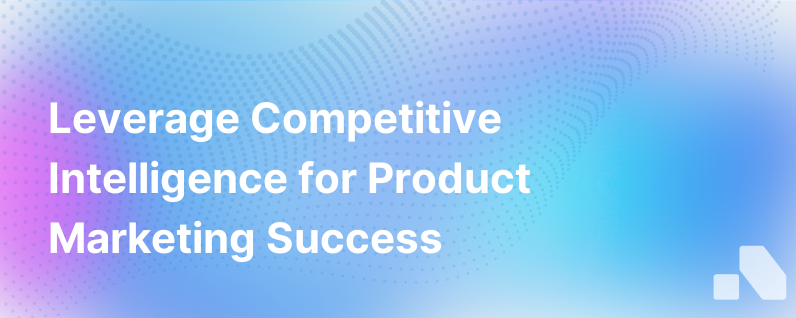Product Marketers Competitive Intelligence
Published on January 1, 2024 by David Zhang
Any successful product marketer knows one crucial thing — you’re not just competing against your industry rivals; you’re fighting for attention in a vast, interconnected digital landscape. Doing this requires a deep understanding of your competition, the market, and your potential customers. This is where competitive intelligence comes into the picture. In this guide, we'll delve into the world of competitive intelligence for product marketers.
What is Competitive Intelligence?
Competitive intelligence is the practice of gathering, analyzing, and applying information about competitors to guide your marketing strategies. It involves monitoring your competition’s activities, understanding their strengths and weaknesses, and using this information to boost your marketing efforts.
The importance of competitive intelligence cannot be understated. It not only allows you to stay a step ahead of your competitors but it also provides key insights into industry trends and customer behaviors. In an age where technologies and market trends evolve rapidly, competitive intelligence often spells the difference between thriving and just surviving.
Why is Competitive Intelligence Crucial for Product Marketing?
-
Define Your Unique Value Proposition: With an in-depth understanding of your competition, you can strategically position your product. Armed with intel about your competitor's offerings and messaging, you can craft a unique value proposition that sets your product apart.
-
Develop Effective Pricing Strategies: Competitive intelligence can give you insights into your competitors’ pricing tactics. Leveraging this information, you can define your pricing in a way that offers your customers the best possible value while maintaining profitability.
-
Identify Gaps in the Market: Understanding competitors’ offerings can reveal gaps in the market — product features, services, or customer needs that are currently unaddressed. These gaps are potential opportunities for your product.
-
Guide Product Development: Competitive intelligence can highlight features or services customers value that you may lack. By incorporating these consumer preferences, you can guide product development to increase customer satisfaction and retention.
How to Gather Competitive Intelligence?
Effectively gathering competitive intelligence requires a systematic approach. Here are the fundamental steps:
-
Identify Your Competitors: Understand who your direct and indirect competitors are. Your direct competitors offer products or services similar to yours, while your indirect competitors may offer alternative solutions.
-
Research Your Competitors: Investigate your competitors’ websites, product offerings, customer reviews, pricing strategies, blog posts, webinars, and other materials. Social media channels, newsletters, and third-party review sites also offer insightful information.
-
Analyze Your Competitors: Make a side-by-side comparison of your research findings. This comparison can highlight trends, similarities, differences, strengths, and weaknesses across your competitive landscape.
-
Apply Your Learnings: Use your analysis to refine your positioning, product offerings, and marketing strategies. It can also prepare your sales team to handle objections regarding your competitors and drive home why your product provides more value.
Enhance Competitive Intelligence with Tools
Managing competitive intelligence can be a daunting task without the right tools. Fortunately, various resources enrich and streamline the process:
- SEO and PPC Tools: Platforms like SEMRush and Moz can provide insights into your competitors’ SEO and PPC strategies.
- Social Media Monitoring Tools: Tools such as Hootsuite and Social Mention can help you monitor competitors' social media presence.
- Review & Feedback Platforms: Websites like G2, Trustpilot, and Capterra gather reviews for thousands of SaaS solutions, helping you understand how customers perceive your competitors.
- AI Competitive Intelligence Platforms: AI-powered tools like Aomni provide real-time account research, actionable competitive insights, and personalized content for your sales and marketing needs.
Complementing these data sources with AI tools such as Aomni can elevate your competitive intelligence, enabling you to aggregate, analyze, and act upon data faster and more accurately than ever before.
Conclusion
Competitive intelligence is an essential component of effective product marketing. It allows you to understand your rivals, identify market gaps, devise effective pricing strategies, and guide your product development. Using the right methodology complemented by strategic tools, such as Aomni AI, product marketers can harness competitive intelligence to carve a unique identity in their market segment, stay ahead of the competition, and meet their customers' evolving needs more effectively.